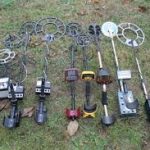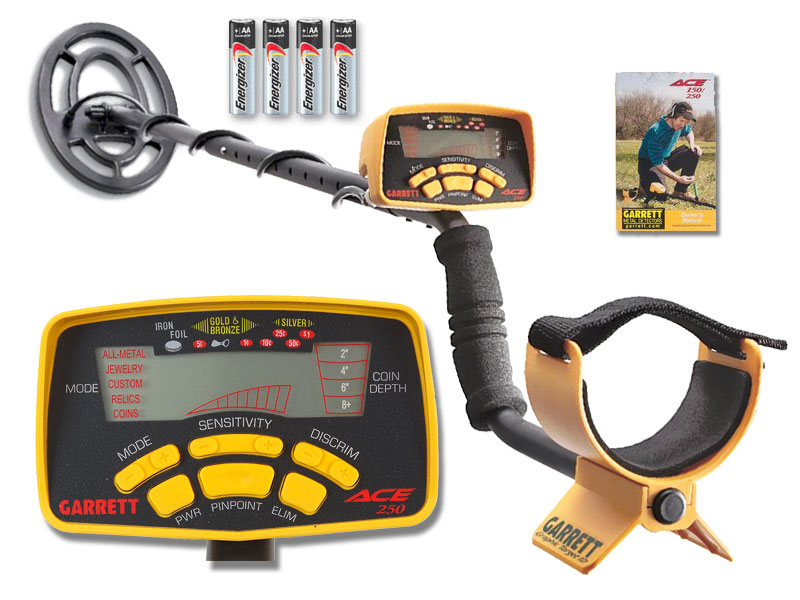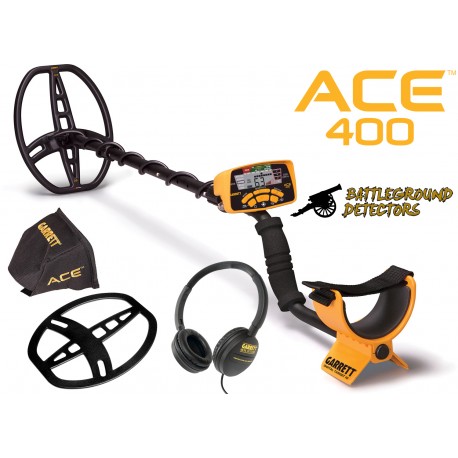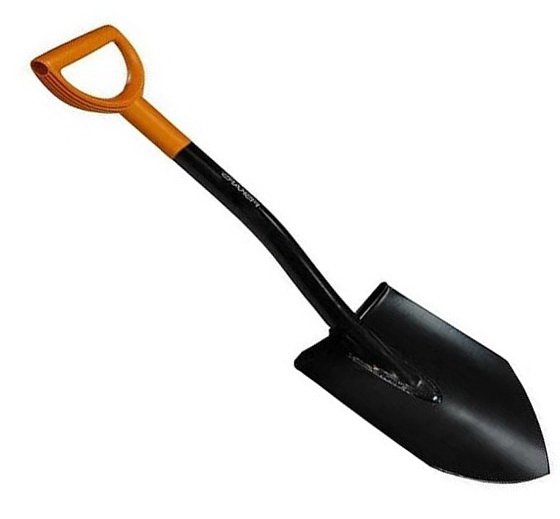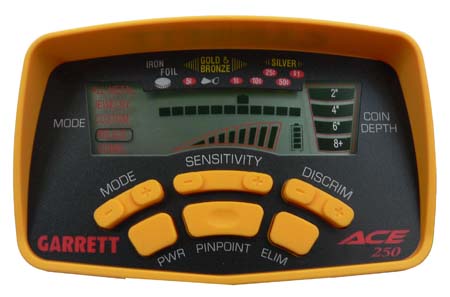
Wykrywacze do 1000zł – przegląd oferty rynkowej w pigułce.
Ekonomiczny sektor wykrywaczy w Polsce i na świecie ma się bardzo dobrze. Większość poszukiwaczy, zaczynając swoją przygodę z poszukiwaniami, chce zaopatrzyć się w detektor efektywny i renomowany, a przy tym niedrogi. Z tej też przyczyny kupujący sięgają po sprzęty z sektora ekonomicznego. Z tej też przyczyny postanowiłem dokonać teoretycznej analizy rynku w sektorze do 1000zł, jako najczęściej wymienianej granicy finansowej. Z tej przyczyny postanowiłem dokonać krótkiego porównania detektorów z tego segmentu.
Oczywistym jest, że w tym przedziale nie znajdą się wykrywacze zaawansowane. Postanowiłem też odpuścić sobie detektory bardzo mało znane i o mocno niepewnym pochodzeniu – nie jestem wielkim fanem „wschodnich” produktów, szczególnie przy dobieraniu wykrywacza. Przejrzałem oferty polskich dystrybutorów i w okolicach 1000zł możemy zakupić takie wykrywki jak:
– Garrett ACE 250 – legendarny „kanarek” w wersji standardowej, mocno już leciwy sprzęt, którego następca wkracza na rynek za kilka tygodni (aczkolwiek będzie droższy od aktualnego modelu).
– Teknetics Eurotek Pro – stosunkowo młody detektor, który szybko zbudował niezłą pozycję na rynku, oferując niezłe możliwości i tworząc ciekawą ofertę dla tych, których nie było stać na Tekneticsy z „greckiej” serii (Delta, Gamma, Omega).
– Minelab Go-Find 40 – marka Minelab od lat kojarzy się z wykrywaczami ze średniej i wysokiej półki dla wymagającego odbiorcy. W ubiegłym roku firma zaatakowała sektor ekonomiczny futurystycznie wyglądającą serią Go Find.
– Fisher F11 – jego bardziej zaawansowany brat, Fisher F22, kosztuje niestety ponad 1000zł i firma w tej kategorii cenowej wystawia sprzęt, który charakterystyką przypomina raczej detektor o klasę niższy. Co ciekawe, Eurotek Pro od tego samego producenta (First Texas) jest o ponad 10% tańszy przy współdzieleniu wielu elementów.
– White’s Coinmaster – podobnie jak Minelab, firma White’s znana jest głównie z zaawansowanych technicznie detektorów o mocnych osiągach. Jednak od lat producent dba o mniej zamożnych klientów, utrzymując ekonomiczne serie wykrywaczy. Obecnie za 1000zł można wyposażyć się w Coinmastera.
– Armand Automatic – zdecydowałem się na umieszczenie krajowego produktu, gdyż producent zapewnia, że wykrywacz profilem poszukiwań odpowiada powyższym.
Wszystkie te wykrywacze mają szereg cech wspólnych. Żaden z nich nie posiada strojenia do gruntu, wszystkie mają wodoodporne cewki. Żaden z nich nie posiada wielotonowej identyfikacji dźwiękowej (od jednego do trzech tonów). Wszystkie mają w wersjach standardowych cewki koncentryczne o podobnych właściwościach (8 cali, podobny zakres częstotliwości). Jakie są więc różnice i czy któryś wykrywacz wyróżnia się na tle pozostałych?
Przy opisach teoretycznych nie lubię kompleksowego poruszania każdego aspektu po kolei (mam nadzieję, że na wiosnę uda mi się skonfrontować wszystkie te wykrywacze w jednym dużym teście), więc skupię się na tym, co w tych wykrywaczach widzę w kategoriach „plus – minus”. Niestety miałem w rękach nie wszystkie, więc odniesienia do praktycznych cech detektorów będą mieć tu drugoplanowe znaczenie.
Największym problemem tanich wykrywaczy nie jest wcale zasięg (który, mimo że nie poraża, uznać można w większości przypadków za wystarczający), tylko słaba ergonomia i niska skuteczność praktyczna. Wpływa na to przede wszystkim niska stabilność pracy wynikająca z domyślnego strojenia gruntu oraz dość szczątkowa identyfikacja celów. Z opisywanych wykrywaczy najbardziej pozytywne wrażenie zostawia Eurotek Pro. Jako jedyny posiada pełną identyfikację numeryczną (od 1 do 99), zamiast szczątkowej, w formie przedziałów. Armand ma jeden sztywny zakres dyskryminacji zarówno w trybie statycznym jak i pseudodynamicznym (jest jedynym detektorem statycznym w zestawieniu), Go-Find wskazuje ID świetlnie i na wyświetlaczu, przy czym opcje ustawień dyskryminacji są bardzo szczątkowe. Pozostałe sprzęty działają na bardzo podobnej zasadzie (8-12 przedziałów ID z możliwością wycinania poszczególnych). Już sama identyfikacja pozostawia konkurentów Euroteka nieco w tyle. Jeśli jeszcze dodamy do tego fakt, iż Eurotek Pro ma specjalny wskaźnik IRON, informujący o przedmiocie żelaznym pod cewką (kolorowe sygnały od większego żelaza to zmora wielu wykrywek), który działa bardzo dobrze, to klaruje nam się wyraźny lider.
Pinpoint jest w tej klasie powszechny, aczkolwiek brakuje go w Armandzie, który jest w zestawieniu sprzętem najbardziej mało „konfigurowalnym” (o ile to w ogóle w tej klasie możliwe). Przejdźmy więc do ergonomii. Uwidacznia się tu pewien minus detektorów od firmy First Texas – zasilanie baterią 9V. W Coinmasterze potrzebne są aż dwie takie baterie. W porównaniu do baterii AA (ACE i Go-Find) są one wyraźnie droższe i bardziej kłopotliwe w eksploatacji (konieczność dokupienia oddzielnych akumulatorków/ładowarek). Ciekawym patentem popisał się Armand, montując w wykrywacz akumulator. Nie znam jednak jego praktycznej wydajności i opcja niemożności zastosowania zasilania awaryjnego mocno ogranicza funkcjonalność wykrywacza.
Kolejnym trendem wynikającym z cięcia kosztów są foliowe klawiatury. Wśród analizowanych sprzętów nie posiada takowej Armand (bo ma włącznik, pokrętło trybu i przycisk zerowania) i Garrett. Tutaj najlepiej wypada kanarek – foliowe klawisze obsługuje się niewygodnie – szczególnie wciskanie pinpointa w rękawicach jest utrudnione i źle wpływa na płynność pracy. Pocieszającą informacją jest to, że Garrett identyczne rozwiązania w tej materii wykorzystał w nowej serii ACE.
Co do czytelności wyświetlaczy to nie ma tutaj za wiele do wyświetlania, toteż patyki nie różnią się od siebie wiele w tej materii. Może Minelab trochę mało czytelny, aczkolwiek z zupełnie dla mnie zbędną opcją synchronizacji ze smartfonem. W Armandzie wyświetlacza brak, to i problemu brak.
Wykonanie ogólne jak na tak zbliżone cenowo sprzęty jest zadziwiająco niespójne. Minelab swój futurystyczne design przypłacił całkowicie plastikową konstrukcją, która nie jest ani wytrzymała, ani kompaktowa, gdyż złożony ACE 250 wielkościowo nie różni się od Go-Finda. Do tego wczesne modele nie posiadają możliwości zmiany cewki. Garrett ACE 250 ma problem z żywicowaną cewką, podatną na uszkodzenia i niestabilną przy niekorzystnych warunkach.
Który wykrywacz warto więc zakupić? W tym momencie segment boryka się z problemem wysokiego kursu dolara oraz starymi modelami. Garrett i White’s nie wprowadziły jeszcze nowości, a i tak ACE 300, następca 250, będzie kosztował więcej niż 1000zł z racji wysokiego kursu dolara. Minelaby na rynku europejskim przyjęto z rezerwą, bo ich użyteczność wygląda na bardzo ogarniczoną. Teknetics Eurotek Pro jest bardziej zaawansowany od Fishera F11 (wszak Eurotek to odpowiednik wyższego modelu Fishera -F22) i jako jedyny w segmencie oferuje dobre ID przy zadowalającym komforcie pracy (szkoda tylko tego zasilania 9V i foliowanej klawiatury i detalu w formie resetowania ustawień przy każdym uruchomieniu). Czuć tutaj, że jest konstrukcją dość świeżą i sensownie zaprojektowaną.
Co przyniosą kolejne miesiące? Najważniejszą premierą będzie nowa seria ACE – poprzednia zdominowała segment w sposób niekwestionowany. Jeśli jednak ACE 300 będzie kosztował więcej od Euroteka Pro z 11′ cewką DD, to wróżę rozczarowanie osiągami fanów żółtych detektorów.
